Seung-Eun Hong
Learning Decentralized Power Control in Cell-Free Massive MIMO Networks
Mar 05, 2023Abstract:This paper studies learning-based decentralized power control methods for cell-free massive multiple-input multiple-output (MIMO) systems where a central processor (CP) controls access points (APs) through fronthaul coordination. To determine the transmission policy of distributed APs, it is essential to develop a network-wide collaborative optimization mechanism. To address this challenge, we design a cooperative learning (CL) framework which manages computation and coordination strategies of the CP and APs using dedicated deep neural network (DNN) modules. To build a versatile learning structure, the proposed CL is carefully designed such that its forward pass calculations are independent of the number of APs. To this end, we adopt a parameter reuse concept which installs an identical DNN module at all APs. Consequently, the proposed CL trained at a particular configuration can be readily applied to arbitrary AP populations. Numerical results validate the advantages of the proposed CL over conventional non-cooperative approaches.
A Bipartite Graph Neural Network Approach for Scalable Beamforming Optimization
Jul 12, 2022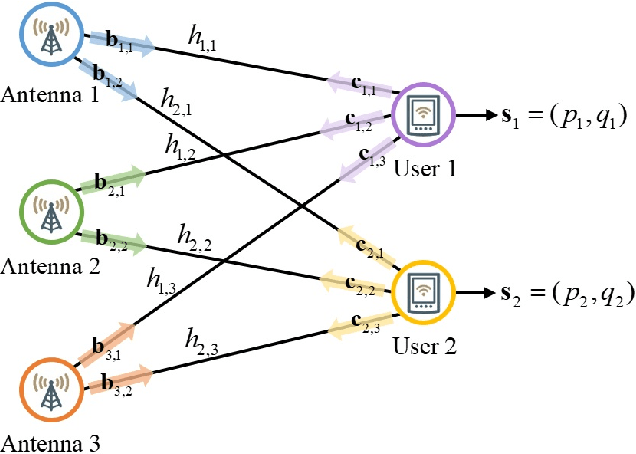

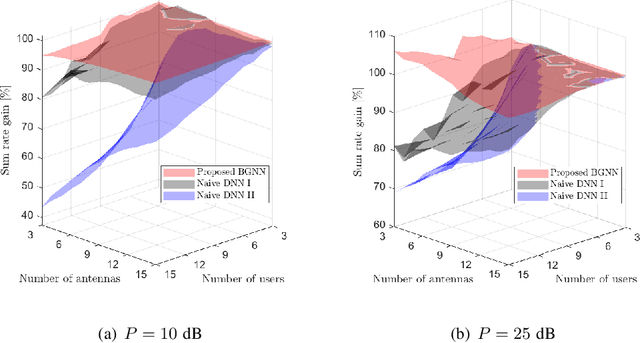
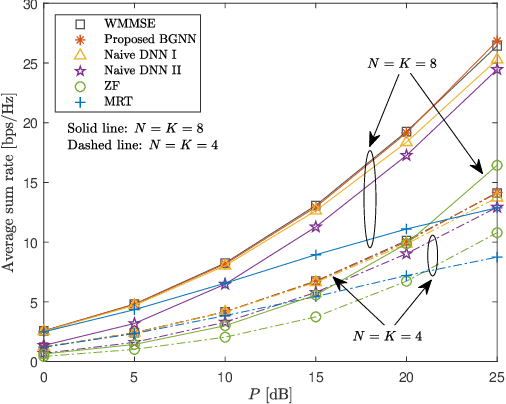
Abstract:Deep learning (DL) techniques have been intensively studied for the optimization of multi-user multiple-input single-output (MU-MISO) downlink systems owing to the capability of handling nonconvex formulations. However, the fixed computation structure of existing deep neural networks (DNNs) lacks flexibility with respect to the system size, i.e., the number of antennas or users. This paper develops a bipartite graph neural network (BGNN) framework, a scalable DL solution designed for multi-antenna beamforming optimization. The MU-MISO system is first characterized by a bipartite graph where two disjoint vertex sets, each of which consists of transmit antennas and users, are connected via pairwise edges. These vertex interconnection states are modeled by channel fading coefficients. Thus, a generic beamforming optimization process is interpreted as a computation task over a weight bipartite graph. This approach partitions the beamforming optimization procedure into multiple suboperations dedicated to individual antenna vertices and user vertices. Separated vertex operations lead to scalable beamforming calculations that are invariant to the system size. The vertex operations are realized by a group of DNN modules that collectively form the BGNN architecture. Identical DNNs are reused at all antennas and users so that the resultant learning structure becomes flexible to the network size. Component DNNs of the BGNN are trained jointly over numerous MU-MISO configurations with randomly varying network sizes. As a result, the trained BGNN can be universally applied to arbitrary MU-MISO systems. Numerical results validate the advantages of the BGNN framework over conventional methods.
Deep Learning Methods for Joint Optimization of Beamforming and Fronthaul Quantization in Cloud Radio Access Networks
Jul 06, 2021
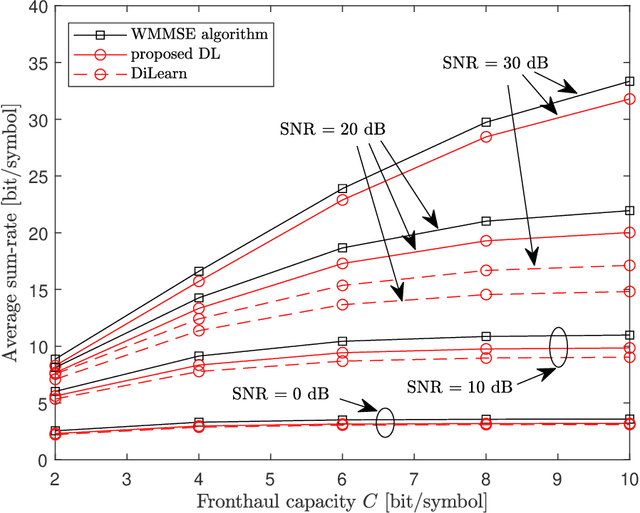

Abstract:Cooperative beamforming across access points (APs) and fronthaul quantization strategies are essential for cloud radio access network (C-RAN) systems. The nonconvexity of the C-RAN optimization problems, which is stemmed from per-AP power and fronthaul capacity constraints, requires high computational complexity for executing iterative algorithms. To resolve this issue, we investigate a deep learning approach where the optimization module is replaced with a well-trained deep neural network (DNN). An efficient learning solution is proposed which constructs a DNN to produce a low-dimensional representation of optimal beamforming and quantization strategies. Numerical results validate the advantages of the proposed learning solution.
Deep Learning Methods for Universal MISO Beamforming
Jul 09, 2020
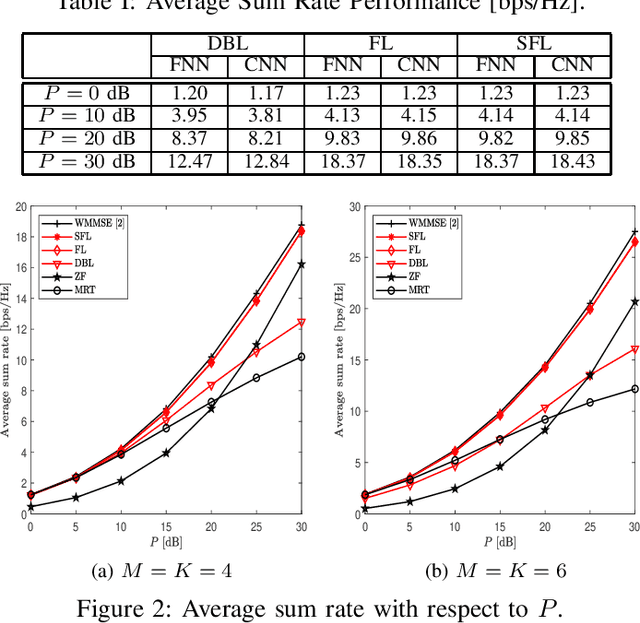
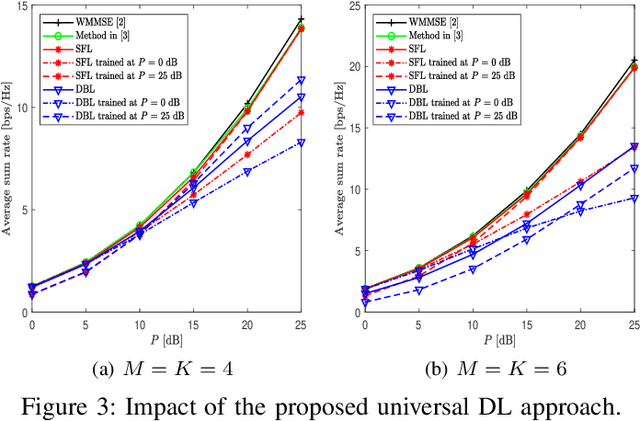
Abstract:This letter studies deep learning (DL) approaches to optimize beamforming vectors in downlink multi-user multi-antenna systems that can be universally applied to arbitrarily given transmit power limitation at a base station. We exploit the sum power budget as side information so that deep neural networks (DNNs) can effectively learn the impact of the power constraint in the beamforming optimization. Consequently, a single training process is sufficient for the proposed universal DL approach, whereas conventional methods need to train multiple DNNs for all possible power budget levels. Numerical results demonstrate the effectiveness of the proposed DL methods over existing schemes.
 Add to Chrome
Add to Chrome Add to Firefox
Add to Firefox Add to Edge
Add to Edge